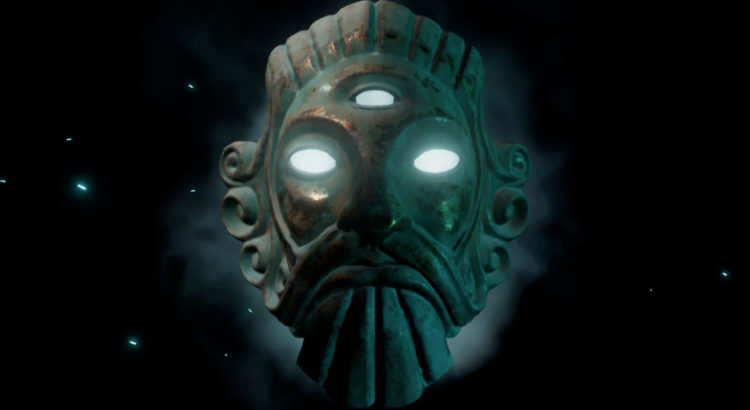In my 15 months working for OtherSide Entertainment on Underworld Ascendant, I created whole animation sets for at least 10 different characters and creatures. There were undead skeletons, lizard men, ghosts, even a massive slug. All fun stuff.
However, one of the tasks I enjoyed the most was making a static mask move as though it was speaking. I love bringing simple, inanimate objects to life. Plus, this gave me a very focused way to practice and study head movement during dialog. I found it fascinating.
With over 4 minutes of dialog to animate and a limited time frame, I knew I had to be pretty efficient. I didn’t want to just jump in and make it move around as though it was speaking. I wanted to try to get across some of the sub-text of what Cabirus was saying as well as how he was speaking.
For me, that process always starts with recording myself delivering the lines. I shot multiple takes of each phrase and then cherry-picked what I thought was the best performance, often editing clips together. Click on the image above to view reference with the finished animation.
When animating, I quickly settled on a very different approach to my usual ‘pose-to-pose’ method. Moving straightforward through the reference, I would key one transform at a pass. That means that I would start by just keying the head translation in Z – to and away from the camera. Then, separately, I keyed Z rotation (side to side tilt), Y rotation (twisting) and X (nodding).
At this point, I would stop to do a quick, overall polish pass. I would push any extremes and adjust timing to give the performance as much life as possible, without going over the top. I would also focus on making sure the nose and chin were following nice arcs. I would wait to adjust the overall timing to better match the dialog until the very end so I could more easily follow the reference.
Then, I would key the Y and X translations – up and down, side to side. These translations really helped give life to the mask and make it seem like maybe it wasn’t so disembodied after all. Finally, I would slide the keys around a bit so the movement better matched and accentuated the dialog, punch things up a bit more and remove any sort of hiccups in the movement.
I found that by keying each transform individually, the masked moved more like our own heads do when we talk. Sure, the movement is all coming from a single point, but not every rotation hits extremes at the exact same time. Things are offset a bit. By focusing on each one individually, the offsets are built right in to the initial animation and I could move quickly through the set while still creating a good performance.
A seemingly simple task, but an enjoyable one and a great exercise in head movement. I can’t wait to apply this technique to a talking head that’s actually attached to something.
Cheers!
